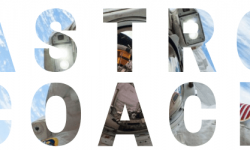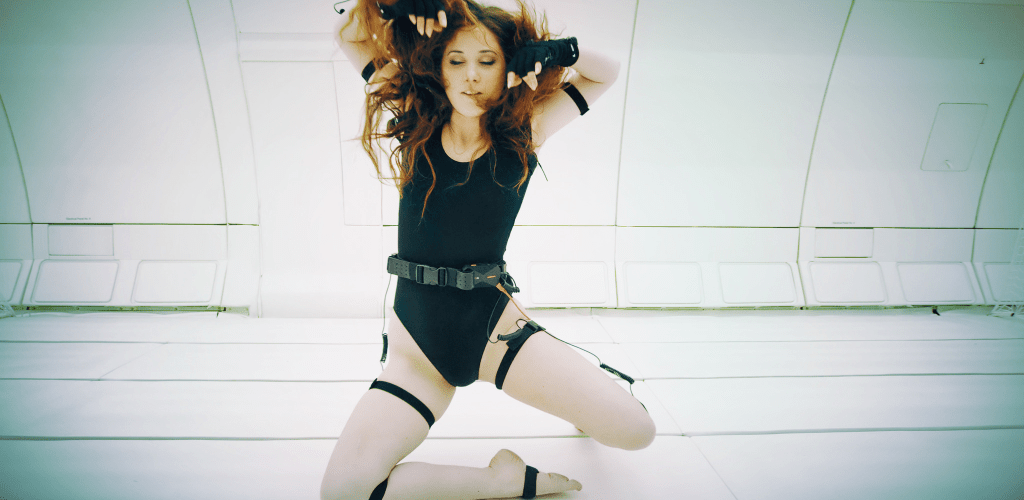
Jeanne Morel dances in weightlessness aboard the Air Zero G’s Airbus A310… and much more! Jeanne talks with us about her background and the many weightless dances that she has performed to date, from preparation to work following 0G flights. Then she answers your questions and gives us her Top 10 for Space Lovers, with lots of great things to discover.
Jeanne, can you introduce yourself and tell us about your projects?
I’m a 0G dancer, specialized in adapting the body to extreme environments (I dance in the top of mountains, in the sea and in micro-gravity). Beyond performing a choreography, I have always sought the essence of dance: what do we express when we dance, what is the impalpable message that dance generates…
I come from the mountains, I have always been very close to nature, outdoors, and my partner Paul Marlier introduced me to diving, to this freedom of the body. Therefore, I specialized in dancing in these places with altered gravity or modified oxygen, and I try to develop a sincere dance in these environments. So far I have made six 0G flights in 3 years.
Here is a video where you can see me dancing in 0G on the Air Zero G’s Airbus A310:
I am also an actress and I do research in art history, I have worked with neuro scientists, for the Dior brand, for television and cinema. In the end, I realize today that everything was intended to create and seek what may be the art of tomorrow. How we can develop a new way of creating, especially for space. Now I work with european space agencies to try to find other ways to develop creation, especially in weightlessness.
Now, I have a lot of plans. I’m a 0G dancer, I also work with Air Zero G, CNES, ESA and DLR and I founded Art In Space with my partner Paul Marlier.
In the end, all of my past experiences are steps to allow what I am doing today. I like to meet teenagers and pass this message on to them because it is not easy to be a teenager today. I realize that I have done a lot of different things and at one point I was told a lot “It will not get you anywhere”, “It is not possible to want to do so many things”.
While today I tell myself that I want to understand astrophysics and one day or another I will study science. Everything I have done in the past ties in today.
I have a friend (Alec Magnan) who is making a film in French Polynesia. He asked me, “If you were told 15 years ago what you are doing today, would you have believed it?” I said no. He then asked me, “Do you think what you are doing today makes sense in the end?” I answered yes.
On the other hand, I cannot hide it, it takes a lot of work.
Can you tell us about Art in Space?
Art In Space is a company that supports projects in the art, science and technology fields, experiences and events from abyss to space. The goal is to take creation outside walls and museums, and develop projects closer to humans and nature, in extreme environments.
Art In Space is the artistic counterpart of space. It is a holding company which includes: a creative studio in extreme environments, a dance company, a research laboratory in neuro-technologies and an exploration center, from abyss to space, open to all.
We all have our capabilities. I don’t have the skills of an astronaut, but I have imagination. I can imagine projects and now I know this world well. One day, astronaut Jean-François Clervoy and aerospace doctor Franck Lehot told me “We need your artistic brain” and I took this chance.
That means we need to create together. If one day we want to go to another planet or another space trip, how do we create, how do we get along with each other? For this we need scientists, engineers, technicians and thinkers.
It’s exciting because the exchanges between us are complementary and extremely rewarding… These are trades with which we wouldn’t necessarily have imagined working and we have created a group of humans who reflect on these space-related questions.
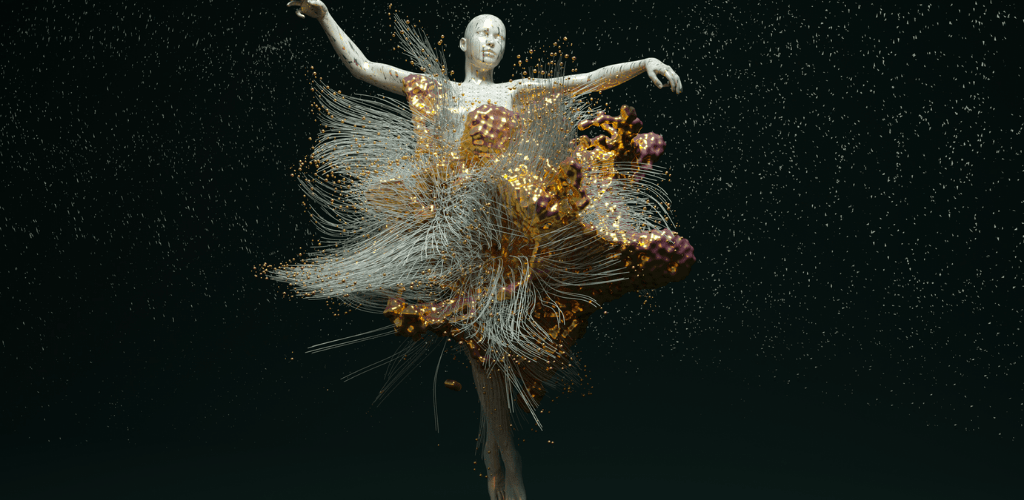
In its creative pole, Art In Space carries out weightless artistic projects. My partner Paul Marlier creates in particular from my biometric data collected in 0G flights. Since my first flight, Paul Marlier has collected my biometric data: the adaptation of my brain, the motion capture of my body, the oxygen level in my blood, my heart beats, the altitude… This gives a print of this almost unreal world, the world of microgravity.
Thanks to this, we create immersive works on Earth.
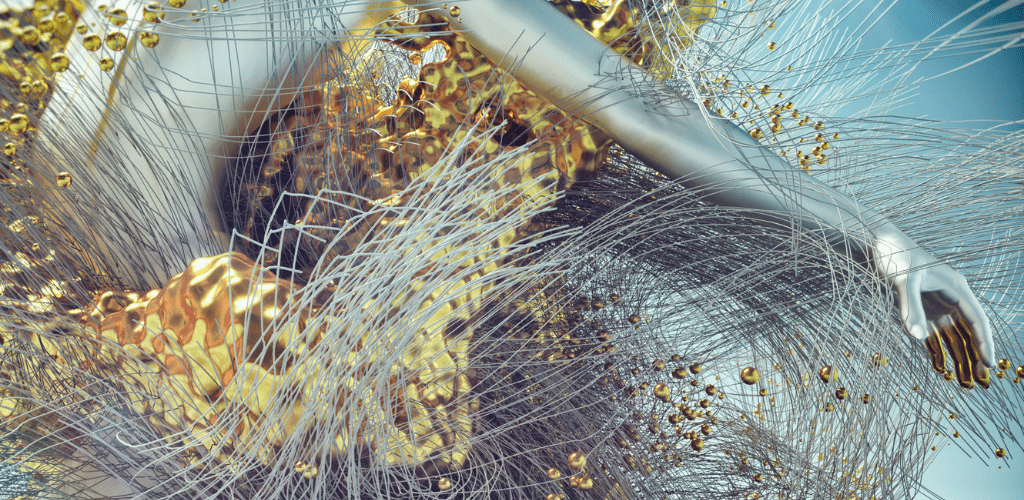
How did your attraction for space come about and how did you come to dance in 0G?
I have a somewhat hybrid background. As a child, I went often in the mountains with my father and my godfather, who were alpinists. My godfather was passionate about stars. Together we went to the mountains and we had a magnificent view.
We felt a little “overview effect” that describe the astronauts, but in the mountains: we looked at the world below and the stars above. It’s a memory that really marked me but I never thought that one day I will work with astronauts, that I will fly in 0G, I will work with space agencies…
I did the dance academy in Lyon and Barcelona, and I also graduated from a branch of the dance academy in San Francisco. In addition to that, I studied art history. I have always worked with scientists, with digital or plastic artists, and with researchers to find out what dance is, beyond what we were taught.
I always wanted to break away from the pre-written choreographies. Classical dance is beautiful and I love to dance it, but I wanted to understand the neural mechanisms in dance, understand its magic, draw its essence, beyond the technique of the body.
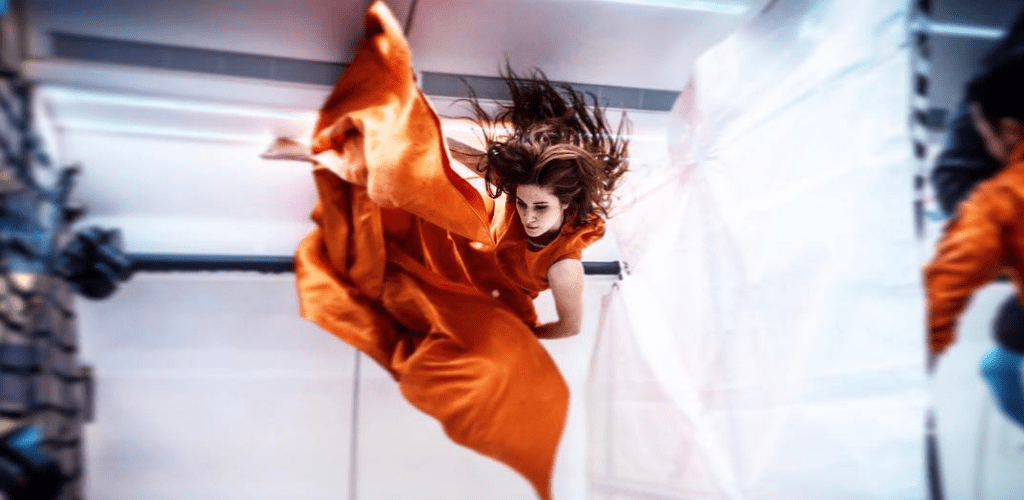
I was looking for another way to express myself, to give people something other than through a ballet or a show I was doing with the groups in which I was dancing. So I went to the theater, science and cinema fields to find other means to express myself.
I continued to research the theme of a new body that would be adapted to other environments. Then I met my partner, who is an architect, a generative artist and a passionate about new technologies.
Together we created performances on the world of the abyss, immersive and interactive artworks, an opera called “Future Testimony”… I wanted to find a hybrid dance and characters able of expressing a renewal of humanity. Little by little, I worked for art foundations, with big companies, for workshops, I participated in talks, etc.
One day, the Centre National des Etudes Spatiales (CNES, the French space agency) contacted me to create a performance during the Sidérations festival, an art festival at CNES, with my partner Paul Marlier. We did this performance in 2015 or 2016, and from there we were told about a call for projects to send an artist to 0G. I applied and I was selected.
How did you prepare for your first 0G flight?
I was very scared at first because I was afraid of flying! So I said to myself, “Either I’m a coward or I face my fear and I take the best trip of my life.” I prepared myself a lot: I did a lot of diving and freediving because before flying in 0G I had to pass cardiovascular exams and other medical exams.
I also did a lot of meditation to be mentally ready to go, and face my fear of flying. When I left for my first 0G flight in October 2016, I was ready and it was the happiest day of my life.
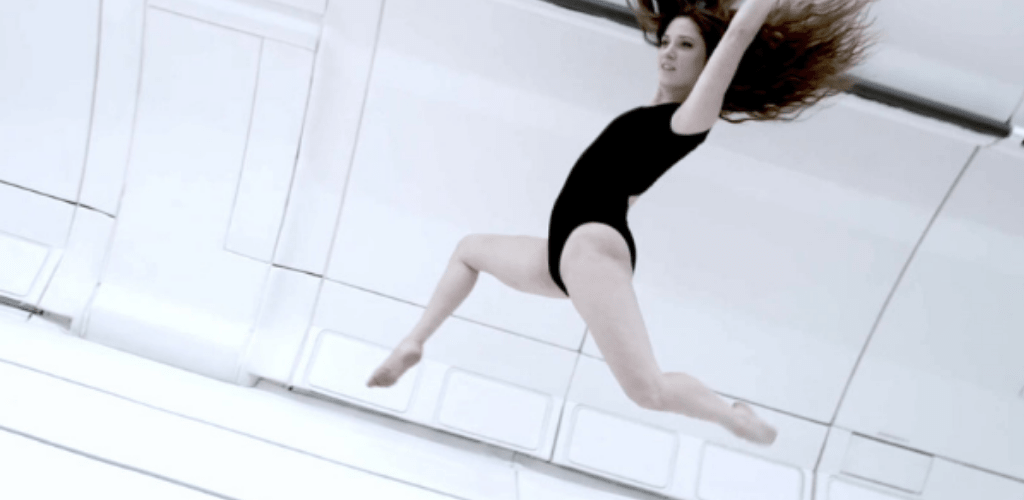
How was it ?
In the Air Zero G plane, which allows you to be weightless, gravity can change thanks to special maneuvers. 0G, 2G, 0.16G, 0.38G… Pilots can recreate the absence of gravity but also lunar gravity and martian gravity. The way of dancing is not at all the same between a lunar gravity (where even if it is weak, gravity exists), and weightlessness.
For example, the first time I danced in 2G, it was quite painful, it gave me strange sensations… As if I weighed 100 kg! But with experience, interesting things happen, It’s like I was carrying myself, I feel my muscles differently. I rediscovered a force in my body, which gives a fairly deep dance.
Gravity is permanent, it acts on my life and our lives, but it is not universal. There are many different gravities in the universe. It’s interesting to be fully aware that it is there and to see how we get rid of it, how we go elsewhere, and how we become another human when gravity is no longer there.
The sensation of my body taking off surprised me a lot during my first 0G flight. The first time, I looked behind me to see if my body was still there! Was it still on the ground or was it still with me… My brain didn’t understand what was going on, I didn’t know where to place myself.
But instead of saying to myself “I’m afraid, I want to hang on the ground” I said to myself “Take advantage of this new freedom and try to create with it”.
I lived this experience as a rebirth, because at a time there happened a phenomenon that I did not understand at the time, and that I understand better today thanks in particular to neuroscience.
It is obvious that the training I did before this first flight allowed me to refine my body control and acquire technique. Once you have acquired the dance technique, you know how to operate your body and when you dance, you can improvise.
The dances are not choreographed. We know scales, like notes, but the melody comes in the environment where the dancer is when dancing.
I will never dance the same way in 0G, underwater, in the Sahara or on a stage in Paris. I will not dance the same way the first day of the performances and the following days. I believe that when I dance, I connect with the universe in which I am. This is how I see dance.
What happens after a 0G dance?
First there is a return. A return to Earth and the feeling of having let fly a weight, a barrier. It is a new state of consciousness. Then comes the hour of creation. CNES asked us to make a restitution of this experience. It was not conceivable for me to “mimic the moment”.
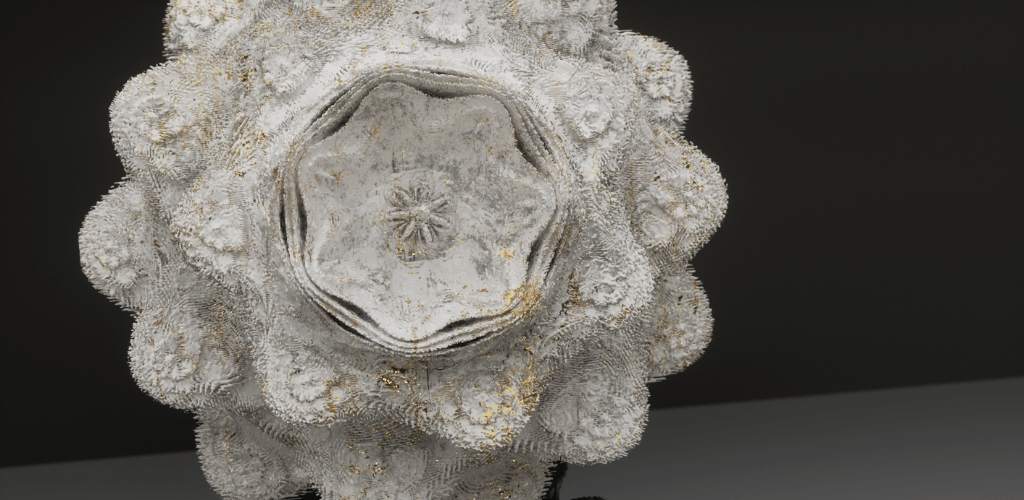
From all the biometric data collected, we create artworks that will be sent to Miami this summer, we create immersive installations, sculptures and a real-time interface adapted to these environments. But for that I will give the floor to my partner, in a future interview if you are interested.
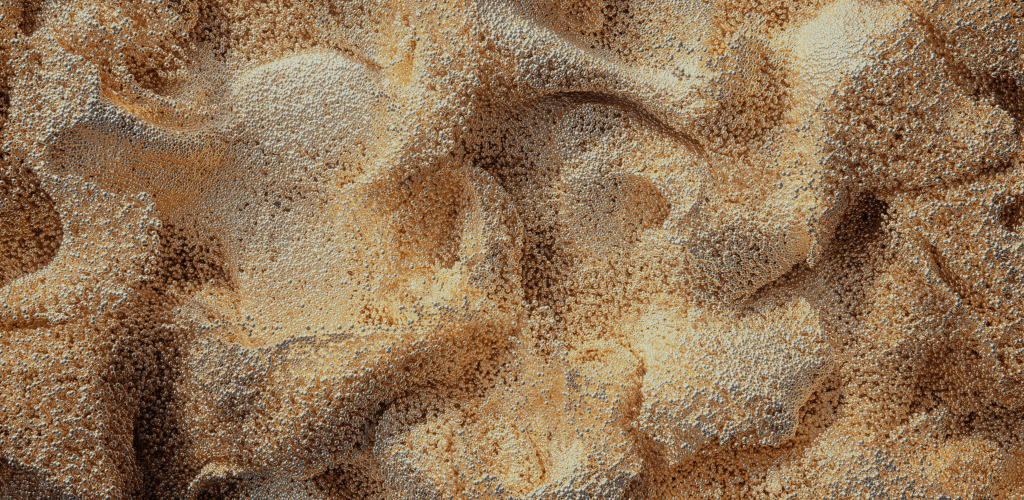
What has dancing in 0G changed in your life?
The 0G dance experience changed my life.
It’s a is a total rebirth. We often say “The weight of things”, “Don’t burden yourself too much”, “It matters”… Experiencing 0G has allowed me to realize the weight we put on, and to realize the magic of flying because of no longer being attracted to what has been hanging on the ground since our birth.
Space Lovers asked questions to Jeanne Morel
How long did it take you from this just being a crazy idea to where you are today? Any plans to hopefully getting a chance to do this in outer space one day? (Curious Astronaut on Facebook)
From the moment I said to myself “I’m going to go, I’m going to do this crazy project, I’m going to contact the space agencies” and the moment I got on the plane, 5 months have passed. This is something that, without really knowing it, I have been planning for a long time. But I never thought I’d go on the 0G plane. I was looking to capture this new form of art, this essence of dance, of Mankind … I was researching what human of tomorrow we could become.
5 months is very little, but it was 5 very intensive months because I had to prepare myself physically and mentally. I did a lot of sports, freediving, diving, cardio and I did a lot of scientific research. I read medical tests on the adaptation of the body to weightlessness, to find out what was going to happen to my bones, my muscles… It was 5 months of intensive research. For this, I went to the seaside and stay there for several months to prepare my flight.
If one day I had the opportunity to go into space, I don’t think I should think too much about what might happen. I think that if I someone tell me tomorrow “You are going to dance in the ISS” I think I would prepare a lot. Astronauts Thomas Pesquet and Jean-François Clervoy once told me “We are ready when we leave”. That’s what I felt when I got on the 0G plane, even if it’s not really comparable. I think I will do my best to prepare my body and my mind for this fabulous trip.
If I had the opportunity to go into space, I would say “Yes I have to go” then if they say to me “You are leaving” I would be speechless! Kind of like 3 years ago when I made my first flight in 0G. But I really want to experience this one day, of course! It’s part of my quest to create in other environments and to discover a little more about these other worlds.
One thing is sure, I would do a lot of meditation before I go!
Have you ever read Spider and Jeanne Robinson’s Stardance Trilogy (Stardance, Starseed, and Starmind) about zero-g dancing? If so, what did you think of it? Jeanne was a trained dancer. Did they get it right? (DiDgr8 on reddit)
Thanks for mentioning this book! No, I had not read it and I had never heard of it but I bought it and indeed, we can speak of anticipation.
This is the story of a dancer who goes to dance in space. She wants to leave Earth and set up a 0G aircraft company. In the third volume comes a visual artist, exactly what my partner Paul Marlier does.
And the heroine is called Jeanne, like me … We have a lot in common, it’s very impressive. It was written in 1977! I haven’t read it yet but the summary makes me think of my life. Thank you for sharing.
Does she know the choreography by heart or does she improvise? (alittlelessconversation on Instagram)
The 0G phases last 22 seconds and are repeated 31 times.
22 seconds is quite long, especially when we feel a body state never experienced before. We no longer really have the same notion of time in weightlessness. For the choreography, I trained in freediving and on Earth.
However, I am not trying to reproduce choreography because I would miss the moment, the essence of dance in this new environment.
On my last flights I was more comfortable, so I felt able to increase the difficulty. I sometimes give myself movements to do but I would find it frustrating to anticipate everything. I don’t imagine dancing that way. In space or on Earth.
I can tell myself that for example I have to try to make a big gap while going up in weightlessness, but this movement will come at the appropriate moment. Otherwise it would be a bit like turning a blind eye to what I am going through, and I do not want to.
What are the differences between dancing in weightlessness and a ballet underwater? (Hard Tack sur Facebook)
Before leaving, I imagined a similarity between the action of weightlessness and the underwater environment on the human body. But no, in weightlessness it is different, we are in free fall. Therefore, it has nothing to do with it. It’s completely new, we fly without any resistance or constraints.
Underwater training has been useful at the cardiovascular level because the 2G phases are quite difficult for the body. Above all, I believe that this allowed immersion in a new body state and the concentration necessary for the adaptability of the body to other environments.
Did she try dancing with actual music in zero-g (via headphones or so)? (Zero-G_freak on Twitter)
I believe there are two phases in my work. First there’s the research phase where I don’t need music. There are already sounds on the plane (the sound is not the same between 2G and 0G, quite soft), we can take inspiration from it, and also the interior sound that you feel when you dance. I made some flights in music, with headphones. I especially remember Harvest by Neil Young.
Then, with Paul Marlier, we created a pattern from body movements. We can communicate these data with the artists who work with us. From my biometric data generated in weightlessness, they can create music.
What kind of preparations and training have you done on Earth to prepare yourself to dance in weightlessness? 0G flights are pretty short, how do you manage to dance with such deep emotion in such a short period of time? (Ellie Coe on Facebook)
To prepare myself, I resumed classical dance to have a strong connection to gravity. I have done yoga, mediation, scuba diving, snorkeling, high mountains and running.
I find that emotion is the basis of art. I think I really immerse myself in that moment, it has real meaning for me. It’s like I’m escaping a bit from my brain. It’s short but the 0G phases are repeated several times. I try to use this time as if it was the only time given to me. The moment I have to give my message, to offer my heart.
How many hours/days/weeks/months of preparations are done before each “0G dance performance”? (Melkes Zoltan on Twitter)
Sometimes I don’t have a lot of time between the time I am informed of my next flight and the departure. Therefore, my body must be ready all the time. But it’s quite interesting because since I danced for the first time on the 0G plane, weightlessness has been with me a little bit every day now.
I was discussing this with astronaut Thomas Pesquet recently, he is one of the pilots of the 0G aircraft and he is preparing for his next mission aboard the ISS. Since he started his studies, he has worked daily to live his dream and to be ready at any time.
How do you manage to support the 0G flights without being sick? Are the choreographies prepared on the ground? (Laura Harel on Instagram)
I am fortunate that I have never been sick.
I take medication before flying, scopolamine. It’s a medicine against motion sickness. I recommend taking this medicine before a 0G flight, it is not very strong and it does not stay in the blood very long. You can have your head down and then up without having motion sickness, it’s pretty magical.
When this project is completed, how will it be released? On Youtube or Vimeo? Your web pages? Or somewhere else? (Peter Heintz on Twitter)
I have several projects. The project on adapting the body to microgravity brings together pictorial works, immersive works, a film and a performance. A first outing will take place recently, From Space With Love will inform you.
But this project is not intended to be finished because everything is possible for the future. I will continue to do research on dance in microgravity. You can follow these projects on social networks (links at the bottom of the page).
What did you want to express when you set up the project? And how did you feel? You work on the material with your dress, do you want to work with other materials, objects or work in duet? (Emeline Pélaprat on Facebook)
The first time I flew 0G, I said to myself “I’m going on a journey to find out what I don’t know, I can’t keep it for myself, I want to give something back to the world”. I wanted to give my whole body to this experience, with my partner Paul Marlier who remained at the base and who collected all my biometric data in real time.
I wanted to return something honest to take the others on a trip. I can’t take everyone flying with me, but I can give you something of this experience, including immersive installations.
The huge red dress you see in the videos was created by designer Eric Plazza. The tail of the dress sizes 4 meters! It was crazy to dance with this dress. I work with other materials with dressmakers. And yes, I’ll be happy to take other people to fly with me!
Perhaps beautiful things are in preparation, who knows?
Jeanne Morel’s Top 10 for Space Lovers
A place?
The Air Zero G’s Airbus A310 whose new design is by Paul Marlier.
An experience ?
Dance. In extreme environments. Especially in the high mountains.
A public figure?
Jean-François Clervoy. He is the first person I met when I arrived at Novespace 3 years ago. I said to him “I’m afraid, I’m terrorized!” and he reassured me enormously. From the beginning, he has been very important to me.
Today he is sponsoring our work. He is an exciting man. I invite everyone to find out. Jean-François really accompanies us. He is perhaps the most artist of European astronauts! He has seen things that few people have seen, and wants to share them.
A book?
There are several… But when I read Hubert Reeves’ book “We are stardust”, I was at sea and I felt connected to the whole planet. It almost reassured me.
It’s strange because sometimes you can think you’re tiny and it can be scary, but by reading this book I understood that we were a whole, where each is of use is useful, like a passenger on a large ship.
We are ourselves a star, we are all born from the same material. I think it’s a beautiful book.
A movie?
“Story” by Dana Ranga. It’s a movie about Story Musgrave, an amazing astronaut. This film and this man inspire me a lot.
A series?
There are bound to be old series like Star Trek… Currently, Altered Carbon is not bad. I also remember a series that happened in the 1990s, “Roswell”! It’s one of the first times I got interested in aliens.
A website?
The ESA Earth Online website takes you on a journey.
A promising project?
The fact that SpaceX works hand in hand with space agencies is a turning point in space History, as in Earth History. When the leaders are humanist, the speed of calculation and rendering is highly interesting for Mankind.
However I can’t help thinking: until when? I believe that the most promising project is the one we each have in our hands, that of doing our best to save the Earth.
A country to follow?
China, or India maybe for their huge space growth. But perhaps we must first take an interest in what our own country is doing. Again, doing everything to preserve the environment.
The key is not absolute growth, but preservation. This is THE fundamental point.
An anecdote ?
This is an anecdote that Jean-François Clervoy told me.
Before his first mission, his instructor Story Musgrave went to see him in quarantine before he took off on the space shuttle Atlantis. Story said to him:
“When you leave quarantine until the space shuttle, open the shutters of the bus, your journey begins there. Then, before getting on the space shuttle, go to the toilet because it is the same toilet that was used by Neil Armstrong before going to take the first steps on the Moon. And once you’re in the shuttle, turn off the lights and look at your spacecraft, Earth. ”
Today, ESA astronauts take many photos and videos of the Earth, but not back then. They didn’t even have time to admire it. Jean-François Clervoy told me that it was thanks to Story that he was able to really become aware of the beauty of the Earth from space. In the end, he simply said “be aware”. And that may be the key, to always be aware of who we are, what we do, how lucky we are to inhabit this “Earth ship”.
Thank you Jeanne!
Follow Jeanne Morel on
Interview carried out in April 2019
Images published with the permission of Jeanne Morel and Paul Marlier.



